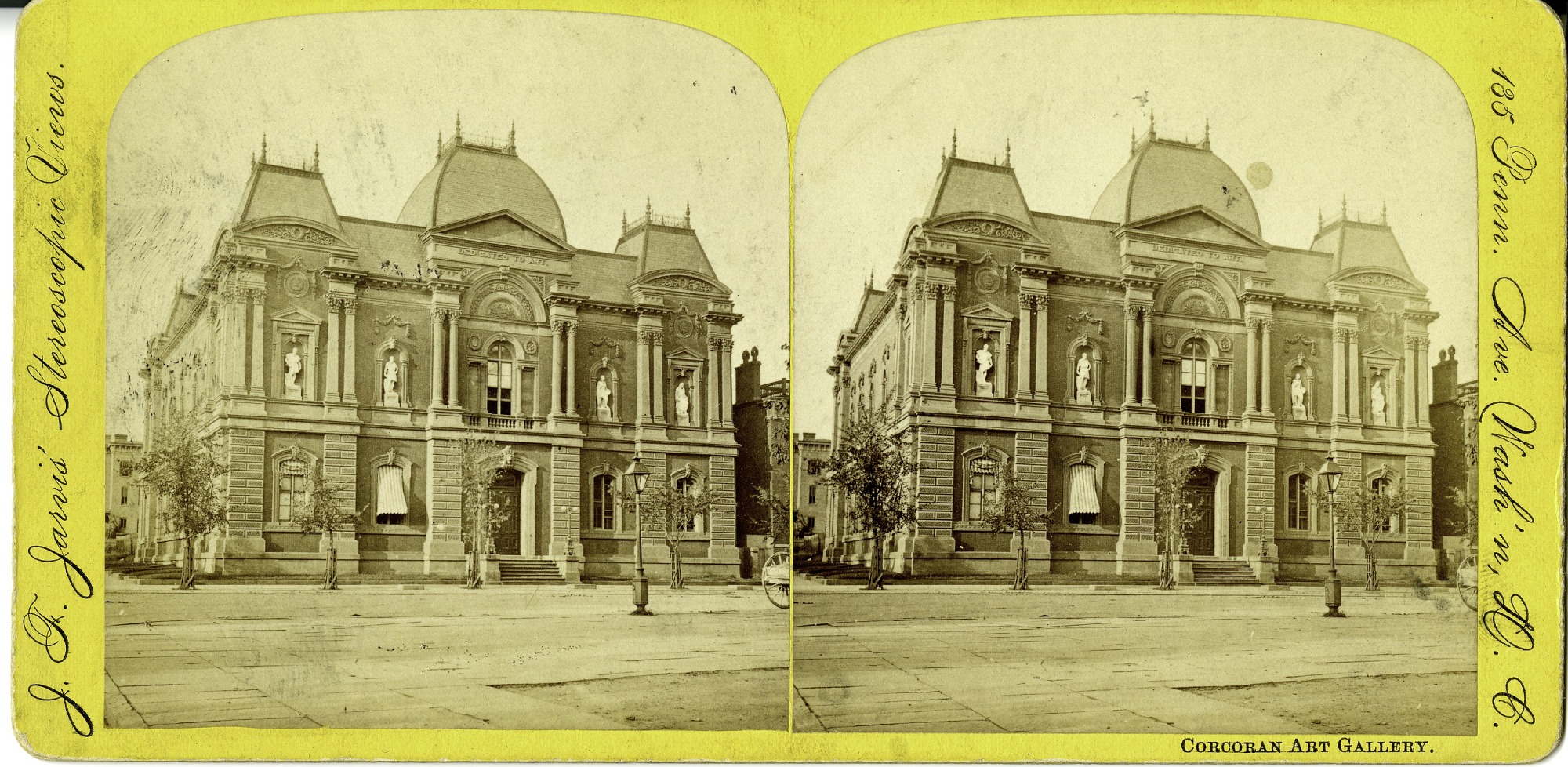Preservation Periodical: Volume 3, Issue 2
Summer 2024
Smithsonian Institution Outdoor Sculptures
By Lucas Harmon
While the Hirshhorn Museum’s Sculpture Garden is temporarily closed for renovation, there are many other opportunities for visitors to view outdoor sculpture at other Smithsonian museums. Below are just a few of the artworks that can be found around Smithsonian properties in Washington, D.C.
Joseph Henry Memorial
The Smithsonian’s first Secretary is commemorated with a statue by artist William Wetmore Story. The memorial consists of an over life-sized bronze portrait of Henry atop an octagonal base of pink and tan granite. The 9-foot-tall Henry figure is depicted standing with his left hand resting on a book atop a pedestal. In an acknowledgement of Henry’s research interest, Story includes an electromagnet on the side of the pedestal, a field in which Henry was a pioneer. Dedicated in 1873, the sculpture was originally placed in the Smithsonian Pleasure Grounds, northwest of the Castle. In 1934, the implementation of the McMillan Plan on the National Mall necessitated the relocation of the memorial, which was moved to its present location across Jefferson Drive from the Castle. The sculpture moved one more time when the bronze figure of Henry was rotated 180 degrees to face the National Museum of Natural history.

Spencer Fullerton Baird Memorial
The Spencer Fullerton Baird Memorial is located in the Enid A. Haupt Garden, near the west entrance to the Arts and Industries Building. The memorial is dedicated to Baird, the Smithsonian Institution’s second Secretary. Sculpted by Leonard Baskin and installed in 1978, the 7-foot bronze figure of Baird sits atop a rectangular granite plinth. Its placement near the Arts and Industries building is appropriate, as the Arts and Industries Building was constructed during his tenure as Secretary.
Columbia Protecting Science and Industry
Caspar Buberl’s sculptural group Columbia Protecting Science and Industry is located above the north entrance to the Arts and Industries Building. The group consists of a female Columbia figure standing over Knowledge, seated on the right side, reading a large book with an owl representing wisdom perched on a globe at her foot. Industry is seated on the left side of Columbia and surrounded by implements like an anvil, hammer, and sprocket. The painted zinc statuary is the only realized group of four that were originally planned to be placed over each of the primary entrances to the Arts and Industries Building.
Continuum
Charles Perry’s Continuum is located at the south entrance to the National Air and Space Museum. Visitors approaching from the south have viewed the bronze form, inspired by the Mobius strip, since the museum opened in 1976. The dark patinated bronze invites visitors to contemplate aspects of the cosmos such as black holes and orbits prior to entering the museum. The center of the sculpture symbolizes a black hole, while the edges represent the flow of matter through the center and back again in a continuum.

Infinity
When Jose de Rivera’s Infinity was installed on the south terrace of the National Museum of American History (then the National Museum of History and Technology) in 1967, it was the first piece of abstract art to be installed on the National Mall. The commission was an outgrowth of the General Services Administration’s Art-in-Architecture program, which encouraged the incorporation of art into the design of public buildings. The highly polished stainless steel form, reminiscent of an infinity symbol sits atop slender, 16-foot-tall black granite base.
Peter Paul Rubens and Esteban Murillo
At the west elevation of the Renwick Gallery of Art two sculptures, one of Flemish painter Peter Paul Rubens and another of Spanish painter Esteban Murillo are tucked into niches at the north and south ends of the second floor. Originally designed by James Renwick, Jr. to house William Corcoran’s art collection, the Renwick once featured seven marble statues of prominent artists in the niches of its façade. When the Corcoran Gallery moved from the building in 1897, so too did the sculptures. When the building was transferred to the Smithsonian Institution in 1965, it was renovated to become home of the Smithsonian American Art Museum. The renovation of the building was completed in 1974 when copies of the Rubens and Murillo sculptures were placed back in the niches. Sculptor and stone carver Renato Luccheti made casts of the originals, by which time were located at the Norfolk Botanical Gardens, to replicate each of the marble sculptures exactly.
